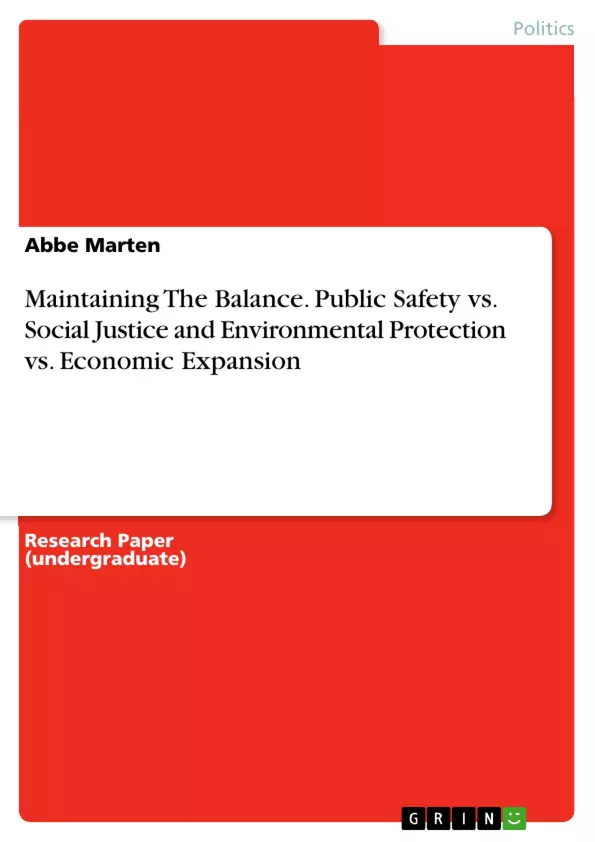From the beginning of the colonization of American to the urban unit of today, citizens of the United States how struggled with the concept of how best to organize the country in such a way so as to minimize costs while also expanding the economy and allowing growth. Attempts to achieve a balance between public safety and social justice as well as between environmental preservation and economic development have always fallen short in the past but there is hope that by the year 2050, the United States can be made over into an image of social and environmental justice that nurtures the quality of life in this country while balancing spending and the economy. Restorative justice and community justice are recently proposed methods for the reform of the justice system, utilizing community engagement to create change and deter crime. To further improve upon the urban unit is the idea of sustainability, which seeks to promote environmental justice with more efficient building standards and the facilitation of community life. With the combination of these two ideas, there is a hope that the United States can revitalize the norm of the urban unit, making it not only cost-effective, but able to serve the people in a better way.
Inhaltsverzeichnis (Table of Contents)
- Introduction
- Restorative Justice
- Victim-Offender Mediation
- Family Group Conferencing
- Sentencing Circles
- Community Justice
- System Accessibility
- Community Involvement
- Reparative Processes
- Re-integrative Processes
- Environmental Justice
Zielsetzung und Themenschwerpunkte (Objectives and Key Themes)
This paper explores the concept of balancing public safety and social justice with environmental protection and economic expansion in urban environments. It examines two proposed solutions: restorative justice and community justice, advocating for their potential to create a more equitable and sustainable urban future.
- Restorative Justice and its role in reforming the criminal justice system
- Community Justice as a model for increasing citizen involvement in public safety
- Environmental Justice and its connection to community engagement and economic sustainability
- The importance of community involvement in achieving justice and sustainability
- The role of government agencies and community organizations in promoting these solutions
Zusammenfassung der Kapitel (Chapter Summaries)
- Introduction: The paper introduces the challenges of balancing competing priorities in urban settings, highlighting the need for innovative solutions to achieve social and environmental justice while fostering economic growth.
- Restorative Justice: This section examines the principles and practices of restorative justice, focusing on victim-offender mediation, family group conferencing, and sentencing circles. It highlights the potential of these methods to reduce recidivism and promote community healing.
- Community Justice: This chapter delves into the theory and implementation of community justice, emphasizing the importance of citizen involvement in public safety and crime prevention. It outlines the key processes of system accessibility, community involvement, reparative processes, and re-integrative processes.
- Environmental Justice: This section explores the intersection of environmental justice with community engagement and sustainable practices. It emphasizes the importance of balancing economic expansion with environmental protection and the role of technology in creating a sustainable future.
Schlüsselwörter (Keywords)
This paper focuses on key themes such as restorative justice, community justice, environmental justice, community engagement, urban planning, public safety, social justice, economic development, and sustainability. It explores these themes in the context of urban environments and examines the potential for innovative solutions to create a more equitable and sustainable future.
- Arbeit zitieren
- Abbe Marten (Autor:in), 2015, Maintaining The Balance. Public Safety vs. Social Justice and Environmental Protection vs. Economic Expansion, München, GRIN Verlag, https://www.grin.com/document/416991



